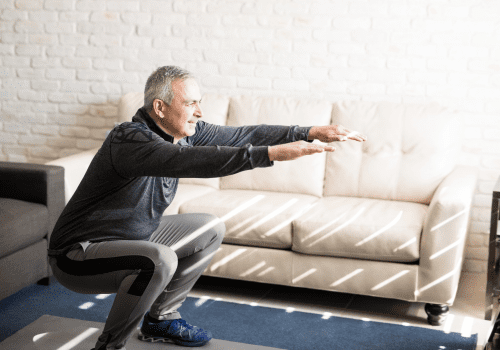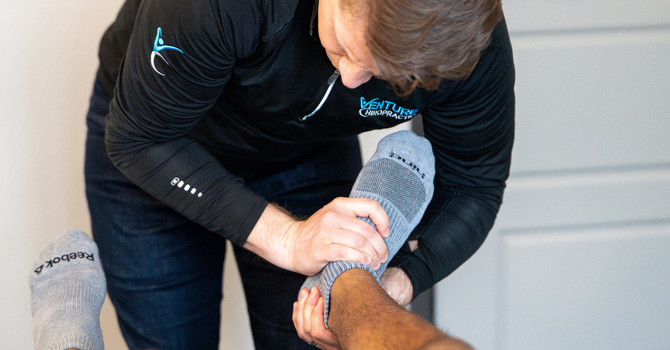
If you have been stretching regularly as previously recommended you should have a quick circuit of stretches and exercises to perform now that looks something like this.
- Foam roll/massage quads and calves (let’s throw in the glutes while we’re at it)
- Stretch quads with knee to chest, kneeling or standing quad stretch
- Standing step calf stretch (knees straight and bent variations please)
- Wall slide squat progression working up to Box squats (work up to 3 sets of 20 reps of whatever variation you can do comfortably)
Usually at this point in converting someone to proper squatting technique they will note a grinding sound (or feeling) in their knee(s) that has been getting worse over the last few years. The reason they bring this up now is because they notice that the grinding sensation or sound changes depending on how they bend down. If your heels stay flat on the ground and you can drop your hips down to knee level that means your knees don’t have to bend and compress nearly so much as they did before. Some people can squat safely as low as thighs parallel to the floor and some people can go lower, but no one should force their knees or hips through a painful ROM to get lower.
If you are still noticing grinding sensations/noises in your knees or if you have any knee pain while squatting we need to look at your Q angle. (Go ahead and google it. I’ll be here when you get back.) Your Q angle is mostly structural, meaning that it is just how your thigh bone lines up with your shin. If you have a large Q angle and poor form while squatting you may be prone to knee pain. This is the part where I tell you to seek the opinion of a chiropractor or physical therapist if you have pain. Go do that now! For the rest of you still reading let’s figure out if you knees bow in or out.
If your knees fall inward then you are not using the muscles in your backside correctly. As you squat down using the wall slide squat that we already learned squeeze the outside of your buttocks so your knees press outward to the sides until your kneecap lines up over your 2nd toe. This is the most common problem I see in patients so it will be the main focus of this blog. If you can watch yourself in a mirror for a self test or have a friend film you with a smart phone you will be able to see what your knees are doing. In most cases just practicing pressing your knees out will greatly reduce knee pain and make squatting “feel better,” but using muscles that you haven’t used in a while is usually more tiring so you may only be able to do a few reps this way at first. Your squat should look like this now.
If you have difficulty doing more than 1-2 reps like this lets add in a new exercise. Side lying hip abductions are an easy exercise for any level of fitness. Lie on your side and stack your left foot on top of your right. Your legs can be straight or bent at a comfortable angle so find the position that is most comfortable for you to start with. Lift your top leg as high as you can while keeping your toes points straight forward. Perform 10 reps and then roll onto your other side and repeat. If you feel a mild burning sensation near your back pocket say, “Hello!” Those are your glutes! You two haven’t talked in a while. Get reacquainted with another set of hip abductions and then try your squat again. You may feel like you are using different muscles than usual. That is great when we are trying to fix a broken movement.
Work on this new progression until next time when we’ll talk about the dreaded “Butt wink!”
by Chris Dockter, DC, CCEP



